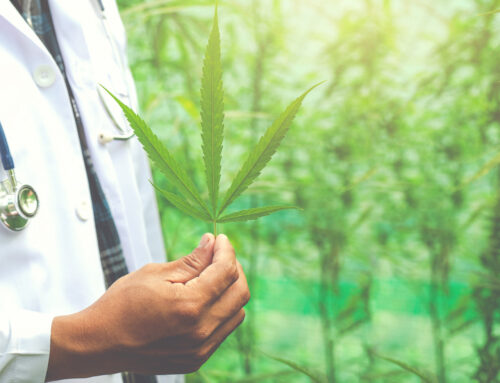PGRs Weed: Are Plant Growth Regulators Safe For Consumers?
Are you concerned about the use of Plant Growth Regulators (PGRs) in your food, garden, and landscape? PGRs are widely used by growers to control plant growth, resulting in larger and more uniform fruits and vegetables. However, there is debate as to whether or not these chemicals present a health risk for consumers. In this blog post, we’ll dive into the various types of PGRs available on the market today, providing information about their safety and potential risks so that you can make an informed decision about how best to care for yourself and your family’s health.
What are Plant Growth Regulators (PGRs) and how do they work
Plant Growth Regulators (PGRs) are compounds that help regulate the growth of plants. These compounds are naturally produced within the plant and can also be synthesized in a laboratory setting. PGRs can influence many aspects of plant growth and development such as cell division, elongation, and differentiation. One of the most common uses of PGRs is to control the height of plants. By manipulating the concentration and application of PGRs, plant growers can prevent plants from growing too tall or encourage them to grow taller. PGRs can also be used to improve fruit quality and yield, delay leaf senescence, and increase stress tolerance. The effectiveness of PGRs ultimately depends on their ability to mimic or disrupt naturally occurring plant hormones. Understanding how PGRs work is critical to the success of plant growth and development, but their application must also be carefully managed to avoid unintended consequences.
Understanding the pros and cons of using PGRs
Plant growth regulators (PGRs) are a powerful tool for gardeners and farmers alike. They can help promote more vigorous growth, encourage flowering or fruiting, and even increase plant yield. However, like any tool, there are pros and cons to using PGRs. On the positive side, they can save time and effort by reducing the need for pruning or training plants. They can also help plants respond better to environmental stresses, such as drought or extreme temperatures. On the other hand, PGRs can have unintended consequences, such as stunting growth or reducing flowering. It’s important to carefully consider the pros and cons of using PGRs before deciding to incorporate them into your gardening or farming practices.
Common types of PGRs and their associated risks
Plant growth regulators, or PGRs, are chemicals that can be used to manipulate the growth and development of plants. While they can be quite useful in promoting desired plant traits such as increased yield or better fruit quality, there are also several associated risks to be aware of. One common type of PGR is auxin, which can cause plants to grow abnormally if not applied carefully. Similarly, cytokinins can cause excessive branching and stunted growth if used improperly. Gibberellins, on the other hand, can result in elongated stems and weaker root systems. It is important to understand the potential risks associated with each type of PGR to use them safely and effectively in plant growth management.
Regulations surrounding the use of PGRs in food production
The use of plant growth regulators (PGRs) in food production is increasingly regulated due to concerns about potential health risks associated with their use. PGRs are chemicals that can be used to control plant growth, increase crop yields, and improve the appearance of fruits and vegetables. However, the increased use of PGRs has led to concerns about their impact on human health and the environment. To address these concerns, governments around the world are enacting regulations to control the use of PGRs and ensure their safety. These regulations vary by country and region, but they typically involve strict monitoring and reporting requirements, as well as limits on the types and amounts of PGRs that can be used in food production. As consumers become more aware of the potential risks associated with PGRs, the demand for organic and naturally grown foods is likely to increase, further driving the need for effective regulatory frameworks.
How to minimize pesticide exposure from PGRs
Pesticides and plant growth regulators may be essential for maintaining healthy crops, but they can also pose a serious health risk to humans. Fortunately, several measures can be taken to minimize pesticide exposure from PGRs. One crucial step is to carefully read and follow the instructions on the label of any pesticide or PGR being used. It’s also wise to wear appropriate protective clothing and equipment, such as gloves, goggles, and respirators, to reduce skin contact and inhalation of harmful chemicals. Avoid applying pesticides or PGRs during windy or rainy conditions that could cause them to spread or be washed away. Additionally, consider alternatives such as organic farming practices or integrated pest management methods to reduce the need for pesticides and PGRs altogether. By being mindful of these steps, it’s possible to minimize the risk of exposure to harmful chemicals in food, water, and the environment.
The potential impacts of PGRs on human health
The use of plant growth regulators or PGRs in agriculture has raised concerns about its potential impacts on human health. These chemicals, which are used to enhance plant growth and increase yields, have been found to leave traces on the fruits and vegetables that we consume. Some studies suggest that long-term exposure to PGRs can lead to health risks, such as cancer and developmental disorders. As consumers, it is crucial to be aware of the potential health impacts of PGRs and make informed choices about the food we eat. More research is needed to fully understand the risks associated with PGRs, but in the meantime, it is essential to prioritize our health and well-being by consuming food that is as natural and organic as possible.
All in all, Plant Growth Regulators can be a useful tool when used properly and responsibly in food production, however, their use should never be taken lightly. It is of utmost importance to research the associated safety risks and regulations surrounding PGRs before using them in any capacity to ensure that human health is not compromised. By doing so you can help limit your exposure to pesticide levels from PGRs and promote the safe use of this chemical growth technique. As with any powerful tool, it is crucial to research thoroughly and determine what course of action is best for you, your business, or your local agricultural needs when it comes to safely utilizing Plant Growth Regulators.
1. Are plant growth regulators safe for humans?
The safety of PGRs for humans depends on the specific type of regulator and the level of exposure. Generally, PGRs are considered moderately toxic and can be harmful if ingested in large quantities or inhaled in concentrated forms. Following proper safety protocols when handling and applying PGRs is crucial.
2. What are the side effects of plant growth regulators?
Short-term exposure to PGRs can cause some mild side effects like:
- Skin irritation
- Eye irritation
- Respiratory problems (if inhaled)
- Nausea or dizziness (if ingested)
3. What are the downsides of PGRs?
While PGRs offer benefits for agriculture, there are some potential downsides:
- Environmental Impact: Improper use of PGRs can contaminate soil and water sources, affecting surrounding plant and animal life.
- Potential for Resistance: Overreliance on PGRs can lead to pest or disease resistance, requiring stronger or more frequent applications.
- Consumer Concerns: Some consumers are concerned about the potential presence of PGR residues on food products.
4. Are plant growth regulators considered pesticides?
The answer depends on the specific function of the PGR. Some PGRs primarily regulate growth and are not classified as pesticides. However, others might target specific pests or diseases and fall under the pesticide category. It's important to consult the product label and safety data sheet (SDS) for each PGR to determine its classification and proper handling procedures.
5. How can I minimize exposure to PGRs on food?
- Choose organic produce: Organic farming typically avoids synthetic PGRs.
- Wash fruits and vegetables thoroughly: This can help remove surface residues.
- Peel fruits and vegetables when possible: Peeling removes residues located on the outer skin.
- Buy local produce when possible: Locally grown produce might have lower PGR residues due to shorter transportation times.



